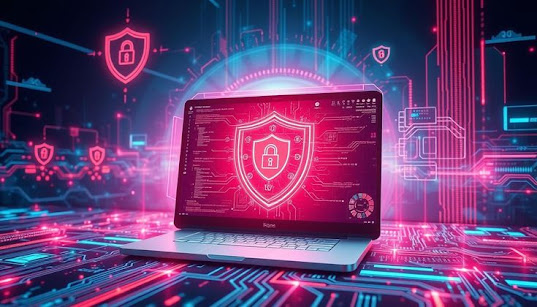How Safe Are Self-Driving Cars from Hackers in 2025?
How Safe Are Self-Driving Cars from Hackers in 2025?
In 2025, self-driving cars are no longer confined to science fiction. They are a reality weaving into the urban fabric of cities around the world. From fully autonomous taxis in San Francisco to advanced driver-assistance systems in personal vehicles across Europe and Asia, the march toward autonomy is steady and unstoppable. Yet as we embrace this technological revolution, we must also face its shadow: cybersecurity. The question "how safe are self-driving cars from hackers?" is no longer theoretical—it's a pressing concern for regulators, manufacturers, cybersecurity experts, and anyone who steps into an autonomous vehicle.
Autonomous vehicles rely on a complex ecosystem of sensors, artificial intelligence, cloud connectivity, and real-time data processing. While these systems allow cars to make decisions, navigate traffic, and avoid accidents, they also open numerous doors for potential attackers. Hackers don’t need a crowbar to steal or compromise an autonomous vehicle—they just need a line of malicious code, a spoofed signal, or a vulnerability in over-the-air software updates. The threat surface is vast, and the consequences are uniquely dangerous. A successful attack could not just expose personal data but potentially cause a fatal crash.
Understanding these risks begins with how these vehicles work. Self-driving cars combine multiple sensors—LiDAR, radar, GPS, cameras, and ultrasonic detectors—to map their environment. This sensory data is fed to onboard AI systems that make split-second decisions. These systems are supported by vehicle-to-everything (V2X) communication, allowing cars to talk to traffic lights, pedestrians, and even other vehicles. While these advances improve safety and efficiency, they also introduce more vectors for cyberattacks. V2X can be exploited by attackers who inject false signals. GPS spoofing can make a car believe it's somewhere else. Even LiDAR, once thought immune to interference, has shown vulnerabilities to signal manipulation.
In the past, traditional vehicles were isolated machines. They were mechanical systems with little or no connectivity. Today, vehicles are more like mobile computers—constantly connected, always analyzing, and heavily reliant on software. Every line of code introduces the possibility of a bug. Every connection becomes a potential entry point. In 2025, most autonomous vehicles receive updates over-the-air, just like smartphones. This convenience means a single compromised update server could potentially infect thousands of vehicles simultaneously. Without rigorous authentication, encryption, and monitoring, the risks are simply too high.
History offers sobering examples. Researchers have already demonstrated how to remotely disable brakes, turn off engines, or take control of steering in certain connected vehicles. In some instances, vulnerabilities were exploited through infotainment systems or Wi-Fi connections. While most of these events were ethical hacking demonstrations intended to force manufacturers to improve security, they highlight real threats. In fact, a major city in Asia saw its autonomous ride-sharing network halted for 48 hours in early 2024 after a cyberattack targeted its navigation systems, causing multiple minor accidents and major public concern.
The industry is responding, but often at varying speeds. Companies like Tesla, Waymo, Cruise, and Baidu have invested heavily in cybersecurity teams. They perform penetration tests, simulate attacks, and continuously monitor vehicle systems for unusual behavior. However, not all manufacturers have the same resources or priorities. There is no universally accepted standard for automotive cybersecurity. Some vehicles may meet the highest industry standards; others might cut corners to reduce costs. This inconsistency is especially dangerous when cars share the road and communicate with each other.
Regulators are trying to keep pace. In the European Union, vehicles must now comply with the UNECE WP.29 regulations, which mandate cybersecurity management systems for new vehicles. The United States has issued guidelines, but they remain largely voluntary. China, meanwhile, has taken a more aggressive approach with national standards that dictate encryption levels and data-sharing protocols. However, the global nature of the auto industry makes unified regulation difficult. A car built in Japan, sold in Germany, and operated in Brazil may face conflicting cybersecurity requirements.
Privacy is another dimension of this discussion. Self-driving cars generate massive amounts of data—from location history to passenger behavior to camera footage of pedestrians. If this data is not adequately protected, it can be misused for surveillance, identity theft, or corporate espionage. Hackers are not the only threat; corporations and governments might exploit this data in unethical ways. In 2025, privacy advocacy groups are pushing for stronger protections, demanding transparency about what data is collected, how long it is stored, and who has access.
AI plays a double-edged role. On one hand, AI helps vehicles detect and respond to threats in real-time, from a child running across the street to a malicious signal attempting to hijack the car. On the other hand, AI systems themselves can be attacked. Adversarial machine learning allows attackers to subtly alter inputs—like painting patterns on stop signs—to fool AI into making dangerous decisions. In one lab test, an autonomous vehicle ignored a stop sign because it had been altered with stickers that confused its image recognition system. In war zones or areas of civil unrest, such tactics could be weaponized.
To counter these risks, multi-layered defense is essential. This includes hardware security modules to protect core systems, encrypted communication protocols, real-time anomaly detection, and continuous software patching. Some vehicles in 2025 now include a “cyber guardian” subsystem—an onboard AI that monitors the vehicle’s behavior and shuts down non-critical systems if it detects unusual patterns. However, no system is infallible. Cybersecurity is a game of constant adaptation, and attackers are always seeking new angles.
Collaboration is key. Automakers must work with cybersecurity firms, regulators, and each other to share threat intelligence and standardize defenses. Ethical hackers—sometimes called white-hats—are playing a vital role. Companies run bug bounty programs that reward individuals who discover and report security flaws. Conferences like DEF CON now include dedicated automotive hacking villages, where researchers demonstrate both attacks and defenses. This open exchange of information accelerates progress and helps close critical vulnerabilities before they can be exploited maliciously.
For consumers, awareness is vital. Just as people learned to install antivirus software and avoid phishing emails, drivers and passengers must understand that digital hygiene applies to cars too. Avoiding unauthorized third-party apps, keeping vehicle software updated, and using secure wireless connections are simple yet powerful steps. In 2025, some insurers even offer lower premiums to owners who enroll in vehicle cybersecurity programs.
Looking ahead, the future of vehicle cybersecurity will likely be shaped by technologies still in development. Quantum encryption may offer unbreakable communication protocols. Federated learning could allow vehicles to learn from each other without sharing raw data. Zero-trust architecture, already popular in enterprise networks, is being adapted for automotive use. As vehicles become increasingly autonomous, the push for stronger, smarter security will only grow.
Ultimately, the question "how safe are self-driving cars from hackers in 2025?" has no simple answer. The technology is improving, but so are the attackers. There have been major advancements in protecting autonomous vehicles, and many are safer now than ever before. But the risk is not zero—and may never be. As long as cars rely on code, they will remain potential targets. The best we can do is build resilient systems, create rapid response mechanisms, and foster a culture where safety and cybersecurity go hand-in-hand.
Trust in self-driving cars will depend not only on their ability to drive but also on their ability to resist those who wish to exploit them. In this new era, cybersecurity is no longer optional—it is the foundation of trust and safety on the road.



Comments
Post a Comment